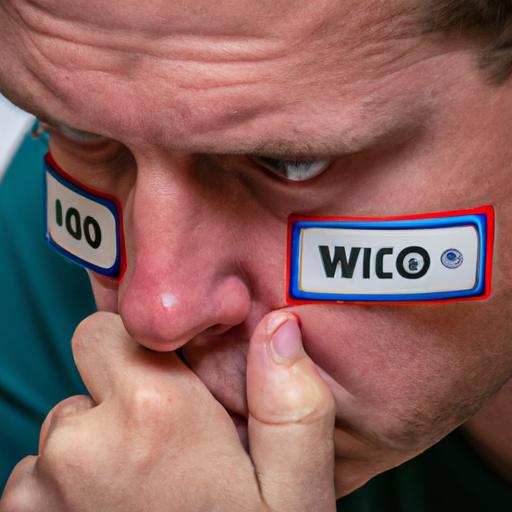Who’s Who Game: An Engaging Social Activity for All Ages

Welcome to Game Hoy! Are you looking for a fun and interactive game to spice up your social gatherings? Look no further than the “who’s who game“! In this article, I will introduce you to this exciting activity that has gained immense popularity among friends and family.
A. Brief explanation of the “Who’s Who Game”
The “Who’s Who Game” is a classic party game that challenges players to identify a hidden character from a group of individuals. Whether you’re hosting a family get-together, a casual hangout with friends, or even a team-building event at the office, this game guarantees endless entertainment and laughter.
B. Importance and popularity of the game in social gatherings
Why has the “Who’s Who Game” become a go-to choice for social gatherings? Simple! It offers a perfect blend of suspense, deduction, and friendly competition. Engaging in this game not only brings people together but also encourages teamwork and critical thinking. No wonder it has become a staple at parties, game nights, and even virtual gatherings.
Imagine the thrill of trying to uncover the identity of a secret character while carefully analyzing the responses of your opponents. The “Who’s Who Game” transcends age barriers and creates a level playing field for everyone. It sparks conversations, encourages interaction, and ensures that everyone has a fantastic time.
So, are you excited to dive into the world of the “Who’s Who Game”? Get ready to sharpen your deductive skills, unleash your competitive spirit, and have a blast with your friends and family. In the next section, we will delve into the rules of the game and explore strategies to excel. Stay tuned!
Understanding the Rules of the “Who’s Who Game”

A. Overview of the Objective and Gameplay
In the “Who’s Who Game,” the objective is simple yet challenging. Players aim to identify a hidden character from a group of individuals by asking strategic questions and making deductive reasoning. The game starts with a set of character cards, each representing a different person.
B. How to Set Up the Game and Assign Roles
To set up the game, gather a deck of character cards and distribute them among the players. Each player receives a card without revealing it to others. It’s crucial to ensure that everyone understands the rules and is familiar with the characters on their cards.
Assigning roles is an exciting part of the game. Players can choose to portray their assigned character or simply keep it a secret while participating in the questioning process.
C. Explanation of the Turn-Based Questioning Process
The turn-based questioning process is the heart of the “Who’s Who Game.” Players take turns asking targeted questions to gather information about the hidden characters. These questions should be designed to eliminate potential options and narrow down the possibilities.
When asking questions, it’s essential to focus on characteristics that differentiate one character from another. For example, you might inquire about physical appearances, occupations, hobbies, or other distinct traits. Listen carefully to the answers provided by other players as they can serve as valuable clues to identify your hidden character.
Remember, the game proceeds in a clockwise or predetermined order. Each player has the chance to ask a question or make a guess during their turn. As the game progresses, use your deductive reasoning skills to eliminate characters and make informed guesses. The player who successfully identifies their character first emerges as the winner.
Now that you have a grasp of the game’s rules and mechanics, it’s time to explore effective strategies and tips to excel in the “Who’s Who Game.” Let’s move on to the next section!
Tips and Strategies to Excel in the “Who’s Who Game”
Are you ready to take your “Who’s Who Game” skills to the next level? In this section, I’ll share some valuable tips and strategies that will help you become a master of deduction and increase your chances of winning. Let’s dive in!
A. Effective ways to analyze and narrow down options
When playing the “Who’s Who Game,” it’s essential to approach the process of elimination strategically. Start by observing the characteristics and traits of the hidden characters. Look for clues that can help you narrow down your options. For example, pay attention to gender, age, occupation, or physical appearance. By systematically eliminating characters based on these criteria, you can quickly reduce the pool of potential candidates.
B. Key questions to ask during the game
Asking the right questions is crucial to gather information and eliminate suspects efficiently. Be strategic with your inquiries, aiming to obtain the most valuable information with each question. Start with broad queries to eliminate large groups of characters, then gradually move towards more specific ones. For instance, you could ask about nationality, hobbies, or relationships to gather clues that will help you identify the hidden character.
C. Observational skills and body language cues to consider
While the “Who’s Who Game” primarily relies on verbal communication, paying attention to the non-verbal cues of your opponents can give you valuable insights. Watch for subtle reactions, facial expressions, or body language that might indicate whether someone possesses certain characteristics or not. Remember, sometimes what isn’t said can be just as revealing as what is said.
By honing your analytical skills, asking strategic questions, and keenly observing your opponents, you’ll significantly increase your chances of deciphering the hidden character in the “Who’s Who Game.” Now that you’re armed with these tips, it’s time to put them into practice and outwit your opponents. In the next section, we’ll explore different variations and adaptations of the game to keep the fun going. Stay tuned!
Benefits and Educational Value of the “Who’s Who Game”
In addition to being an enjoyable social activity, the “Who’s Who Game” offers numerous benefits and educational value. Let’s explore how this game can enhance various skills and promote valuable learning experiences for players of all ages.
A. Enhancing critical thinking and deductive reasoning skills
The “Who’s Who Game” is a fantastic tool to sharpen critical thinking and deductive reasoning skills. As players ask strategic questions and receive answers, they gather information and analyze it to eliminate potential options. This process requires logical thinking, careful observation, and the ability to draw conclusions based on limited information. The more you engage in this game, the better you become at analyzing clues, making connections, and honing your deductive abilities.
B. Development of effective communication and questioning techniques
Effective communication and questioning techniques are essential in the “Who’s Who Game.” Players must ask relevant questions that provide valuable insights without giving away their own character’s identity. This encourages players to think critically about the information they need and how to ask questions strategically. As you play the game, you’ll become more adept at formulating precise and insightful questions, improving your overall communication skills.
C. Promoting teamwork and social interaction
The “Who’s Who Game” is an excellent avenue for fostering teamwork and social interaction. Whether you’re playing with family, friends, or colleagues, this game encourages collaboration and cooperation. Players often work together to identify the hidden characters, sharing their observations, discussing strategies, and collectively analyzing the available information. This collaborative atmosphere not only strengthens bonds but also fosters a sense of camaraderie and unity among the participants.
By promoting critical thinking, effective communication, and teamwork, the “Who’s Who Game” provides invaluable educational value while ensuring a great time for all involved. Now that you understand the various benefits, let’s move on to the concluding section where we’ll recap the game and encourage you to experience it firsthand.
Conclusion
Game Hoy brand has provided an engaging and thrilling game that has stood the test of time – the “Who’s Who Game”. Throughout this article, we have explored the ins and outs of this classic party activity, from its rules and strategies to its variations and educational benefits.
The “Who’s Who Game” has proven to be an excellent choice for social gatherings, bringing people together and fostering a sense of camaraderie. Its popularity can be attributed to its ability to transcend age barriers, making it enjoyable for both young and old. By engaging in this game, you not only have the opportunity to have fun but also to enhance your critical thinking, deductive reasoning, and communication skills.
As we’ve discovered, the game offers various adaptations and modifications to cater to different preferences and cultural backgrounds. Whether you’re exploring different versions of the game or making cultural adaptations and regional variations, there is something for everyone to enjoy.
So, why wait? Gather your friends, family, or colleagues and embark on a journey of mystery and deduction with the “Who’s Who Game”. It’s time to put your detective skills to the test and uncover the hidden identities. Get ready for endless laughter, thrilling moments, and unforgettable memories. Let the “Who’s Who Game” bring joy and excitement to your next social gathering!
Remember, for more exciting games and activities, visit Game Hoy. Happy gaming!
Conclusion: So above is the Who’s Who Game: An Engaging Social Activity for All Ages article. Hopefully with this article you can help you in life, always follow and read our good articles on the website: Game Hoy




